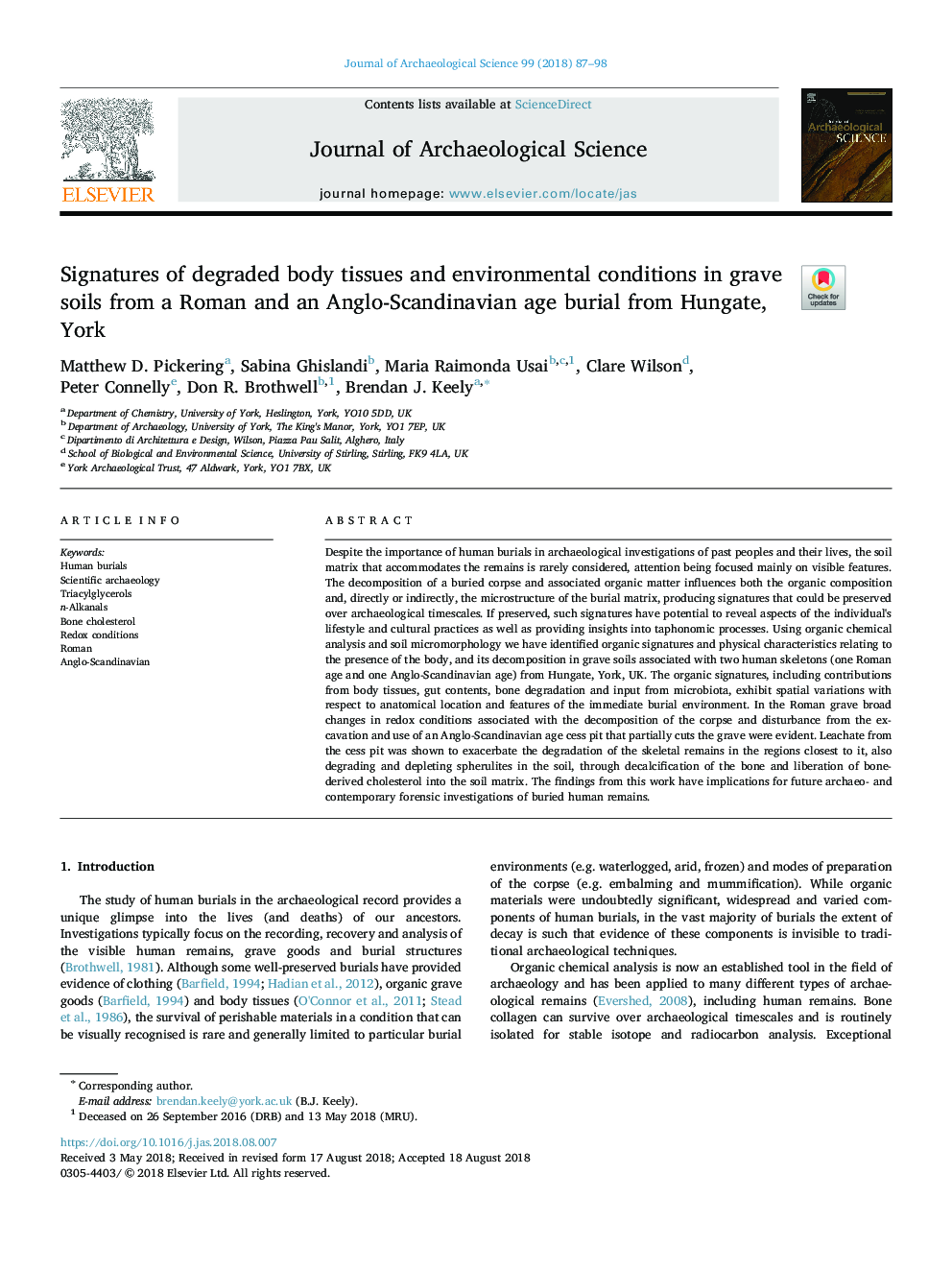| کد مقاله | کد نشریه | سال انتشار | مقاله انگلیسی | نسخه تمام متن |
|---|---|---|---|---|
| 11029761 | 1646449 | 2018 | 12 صفحه PDF | دانلود رایگان |
عنوان انگلیسی مقاله ISI
Signatures of degraded body tissues and environmental conditions in grave soils from a Roman and an Anglo-Scandinavian age burial from Hungate, York
ترجمه فارسی عنوان
امضاء بافت های تخریب شده بدن و شرایط محیطی در خاک های قرون وسطایی از گورستان رومی و انگلوس اسکاندیناوی از مجارستان، یورک
دانلود مقاله + سفارش ترجمه
دانلود مقاله ISI انگلیسی
رایگان برای ایرانیان
موضوعات مرتبط
مهندسی و علوم پایه
مهندسی مواد
دانش مواد (عمومی)
چکیده انگلیسی
Despite the importance of human burials in archaeological investigations of past peoples and their lives, the soil matrix that accommodates the remains is rarely considered, attention being focused mainly on visible features. The decomposition of a buried corpse and associated organic matter influences both the organic composition and, directly or indirectly, the microstructure of the burial matrix, producing signatures that could be preserved over archaeological timescales. If preserved, such signatures have potential to reveal aspects of the individual's lifestyle and cultural practices as well as providing insights into taphonomic processes. Using organic chemical analysis and soil micromorphology we have identified organic signatures and physical characteristics relating to the presence of the body, and its decomposition in grave soils associated with two human skeletons (one Roman age and one Anglo-Scandinavian age) from Hungate, York, UK. The organic signatures, including contributions from body tissues, gut contents, bone degradation and input from microbiota, exhibit spatial variations with respect to anatomical location and features of the immediate burial environment. In the Roman grave broad changes in redox conditions associated with the decomposition of the corpse and disturbance from the excavation and use of an Anglo-Scandinavian age cess pit that partially cuts the grave were evident. Leachate from the cess pit was shown to exacerbate the degradation of the skeletal remains in the regions closest to it, also degrading and depleting spherulites in the soil, through decalcification of the bone and liberation of bone-derived cholesterol into the soil matrix. The findings from this work have implications for future archaeo- and contemporary forensic investigations of buried human remains.
ناشر
Database: Elsevier - ScienceDirect (ساینس دایرکت)
Journal: Journal of Archaeological Science - Volume 99, November 2018, Pages 87-98
Journal: Journal of Archaeological Science - Volume 99, November 2018, Pages 87-98
نویسندگان
Matthew D. Pickering, Sabina Ghislandi, Maria Raimonda Usai, Clare Wilson, Peter Connelly, Don R. Brothwell, Brendan J. Keely,
